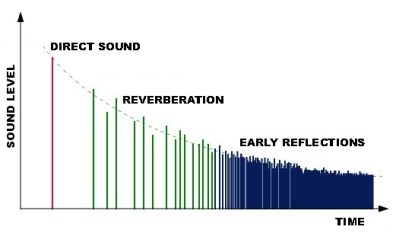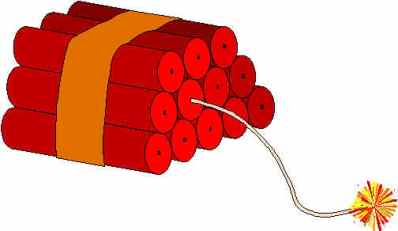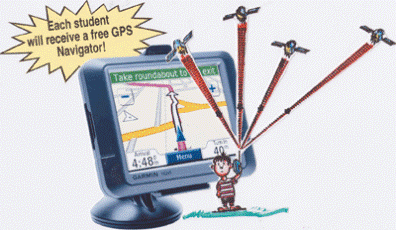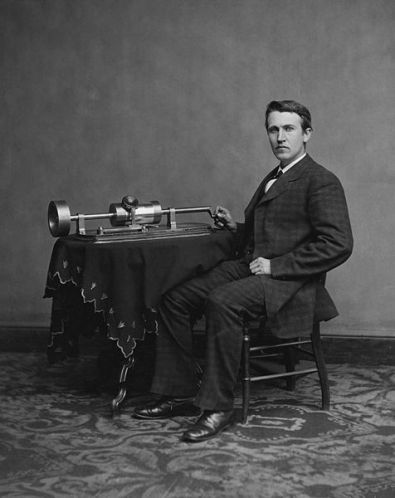 Applied Technology Institute (ATI Courses) is scheduled to present the following Unmanned Aircraft Courses below.
Unmanned Air Vehicle Design Sep 24-26, 2013 Columbia, MD
Unmanned Air Vehicle Design Jan 28-30, 2014 Columbia, MD
Unmanned Aircraft System Fundamentals Jul 23-25, 2013 Columbia, MD
Unmanned Aircraft System Fundamentals Feb 25-27, 2014 Columbia, MD
This is an article that we think will be of interest to our students. It was written by Alon Unger – UVID 2013 Conference Chairman – Israel – 10.10.2013and originally appeared at http://www.israeldefense.com/?CategoryID=472&ArticleID=1646
The global demand for unmanned systems, in conjunction with the high rate of technological progress in this field, often leads to these weapon systems being fielded before they reach operational and logistic maturity.
The rapid growth in the number of companies engaged in unmanned systems and the rapid technological progress made in the fields of miniaturization, electrooptics, communication, and computers, have led to a situation where state-of-the-art technology is installed in these systems. This, in turn, creates numerous challenges for everyone involved.
The most significant implication of the uniqueness of unmanned systems is that they are technology-intensive systems that make it possible to set advanced operational challenges and objectives in diversified operating environments. This requires that the personnel operating these systems have a high level of proficiency and professionalism. In addition, this proficiency includes numerous capabilities and skills beyond the mere steering of the airborne platform and the operation of the payloads.
In UAV systems (also called UAS – Unmanned Aerial Systems), which are controlled in real time, the operator normally occupies a remotely located ground control station where he must analyze the status of the system, the operational environment, and real-time occurrences through “remote control” sensing. He understands, for example, the weather conditions at a distance of tens to hundreds of kilometers, without being able to see the whole environment through the canopy, or identify a drop in engine thrust merely through the gauges, without physically sensing it. These seemingly simple tasks necessitate proficiency from a distance.
As part of current UAS development efforts, two prominent factors directly affect system operation. The first factor, which mainly affects the steering and system operation, provides advanced capabilities to the aircraft, including a higher degree of autonomy and automation, improved reliability, extended operation and communication ranges, and upgraded propulsion systems. In addition to simplifying system control, reducing the number of operators at the ground control station, and improving the basic safety standards, these technological capabilities often have the opposite effect on the operating aspect.
One example of a negative side effect is the deterioration in basic operator proficiency. This has the potential to damage the operator’s ability to cope with emergency situations, or in extreme cases, conceive the steering of the UAV as the operation of a flying model aircraft. This consequently affects the basic operator training standards (this conceptual error is typical made by countries taking their first steps into the field of unmanned systems).
The second factor, which mainly affects the mission and interpretation aspect, is improving and adding mission capabilities through new payloads or through the improvement of existing ones. This trend significantly raises the level of complexity for the operator. Today, operators are required to control multiple payload types (Electro-Optical, IR, SAR, EW, SIGINT) in different environments (close and long range, urban and open terrain, day and night, extreme weather conditions, and so forth), and be able to effectively execute a range of mission types. Such missions include intelligence collection, close surveillance support for advancing ground forces, battle damage assessment, and many others.
In the last decade, these factors were supplemented by the objective of reducing the number of operators at the ground control station. This process, whose primary objective is improved efficiency, does not necessarily improve mission performance, and often leads to an increased operating workload to the point of rendering mission execution impossible, or at times, failing to steer the UAV in a reasonably safe manner. For example, the majority of Mini-UAV systems boast the ability to have the mission executed by a single operator. Technically, this system operation is possible. However, a simple analysis of the operator’s functional characteristics will show that the mission environment and the number of simultaneous activities (system control, payload control, maintaining and tracking target contact, reporting, etc.) usually do not allow for the mission to be executed effectively and safely by a single operator.
This insight is further emphasized when the background of the operating personnel is less than optimal. This is currently the case in several countries around the world where the relevant authorities are not sufficiently stringent about screening and selecting the appropriate personnel for the execution of these systems and missions.
A review of the psychological aspect also suggests that UAV operators are unique. A US study published in 2009 examined the population of Predator (MQ-1) UAV operators in the US. The study established a correlation between the nature of their activity and extremely high levels of fatigue, sleep disorders, and stress. Other studies established a circumstantial correlation with high psychological pressures emanating from cognitive and emotional transitions in the operational daily routine of UAV operators and from the rapid leaps between the executions of critical operational missions over the battlefield to daily life with family.
The gamut of environmental, mission, and technological variables has made the operation of UAV systems much more complex than ever before.
UAV operators are required to be technically proficient in and professionally knowledgeable about numerous technological measures and different computer environments, all while having to meet their operational objectives in real time. Even for a seasoned, highly skilled operator, this constitutes a major challenge.
The following variables illustrate the range of capabilities and characteristics UAV operators are required to possess: multitasking, working under pressure and making decisions in real time, good spatial perception, teamwork, assertiveness, perseverance, patience, service awareness, work ethics, maturity, creativity, a methodical approach, and an ability to learn quickly. Accordingly, these implications should be reviewed through the aspects of selecting the operators, training them, maintaining their competence, assembling teams, developing careers, adding mission tools, assimilation, and legislation.
The Human Factor aspects are also particularly important in layouts and system engineering required to apply remote control operations, such as UAV systems. Most of the current studies that deal with analyzing the causes of UAV accidents and the performance standards of UAV systems have established that the human factor is the most influential element with regards to the two variables outlined above. To date, most UAV accidents are caused by failures linked to the human factor, such as faulty user interface design, operating errors, and other factors, all coming under the definition of “Human Error.”
One prominent example of this is the investigation of the crash of the Predator B (MQ-9) UAV in Arizona on April 25, 2006. The National Transportation Safety Board, who investigated the accident, came up with numerous variables that may have caused the crash, most of which are linked to the human factor. One of the lessons drawn from this accident suggests that the phenomenon of gaps in this field far exceed the boundaries of this particular accident that are prevalent in all UAV systems.
Many years ago, Israel identified the Human Factor aspect as a primary factor in system performance and safety standards. Accordingly, for many years afterwards, human factor professionals were involved in the field of UAVs in Israel. However, even in Israel, the investments made in the effort to develop the system around the operator are in no way similar to the investments made in manned systems. This gap is especially evident on the ground, often because of the absence of specific standards for this field.
“The Human Behind the Unmanned System Will Make the Difference” is a slogan I invented many years ago. Since then, I have often been asked to explain it by using various aspects outlined in this article.
The complexity of UAV systems environment parameters, the technological race, and above all, the increasingly ambitious operational demands, are external variables that are likely to remain with us for many years to come. Understanding the central role that the human element plays in unmanned systems is a process that has just begun. As such, we must internalize the axiom “the system is only as good as its operator.”
In the last year, the US has begun to change their definitions of UAVs from “Unmanned Vehicles” to “Remotely Piloted Aircraft (RPA).” This trend, which amends the system manning issue, may lead to a change in the prevailing concept regarding the central role played by the human element, and could also lead to a change in Israel’s concepts and terminology. Nevertheless, it raises an historical debate of Pilot vs. Operators issue. Personally, I would recommend the term “Remotely Operated Aircraft” but this is an issue for another article.
Applied Technology Institute (ATI Courses) is scheduled to present the following Unmanned Aircraft Courses below.
Unmanned Air Vehicle Design Sep 24-26, 2013 Columbia, MD
Unmanned Air Vehicle Design Jan 28-30, 2014 Columbia, MD
Unmanned Aircraft System Fundamentals Jul 23-25, 2013 Columbia, MD
Unmanned Aircraft System Fundamentals Feb 25-27, 2014 Columbia, MD
This is an article that we think will be of interest to our students. It was written by Alon Unger – UVID 2013 Conference Chairman – Israel – 10.10.2013and originally appeared at http://www.israeldefense.com/?CategoryID=472&ArticleID=1646
The global demand for unmanned systems, in conjunction with the high rate of technological progress in this field, often leads to these weapon systems being fielded before they reach operational and logistic maturity.
The rapid growth in the number of companies engaged in unmanned systems and the rapid technological progress made in the fields of miniaturization, electrooptics, communication, and computers, have led to a situation where state-of-the-art technology is installed in these systems. This, in turn, creates numerous challenges for everyone involved.
The most significant implication of the uniqueness of unmanned systems is that they are technology-intensive systems that make it possible to set advanced operational challenges and objectives in diversified operating environments. This requires that the personnel operating these systems have a high level of proficiency and professionalism. In addition, this proficiency includes numerous capabilities and skills beyond the mere steering of the airborne platform and the operation of the payloads.
In UAV systems (also called UAS – Unmanned Aerial Systems), which are controlled in real time, the operator normally occupies a remotely located ground control station where he must analyze the status of the system, the operational environment, and real-time occurrences through “remote control” sensing. He understands, for example, the weather conditions at a distance of tens to hundreds of kilometers, without being able to see the whole environment through the canopy, or identify a drop in engine thrust merely through the gauges, without physically sensing it. These seemingly simple tasks necessitate proficiency from a distance.
As part of current UAS development efforts, two prominent factors directly affect system operation. The first factor, which mainly affects the steering and system operation, provides advanced capabilities to the aircraft, including a higher degree of autonomy and automation, improved reliability, extended operation and communication ranges, and upgraded propulsion systems. In addition to simplifying system control, reducing the number of operators at the ground control station, and improving the basic safety standards, these technological capabilities often have the opposite effect on the operating aspect.
One example of a negative side effect is the deterioration in basic operator proficiency. This has the potential to damage the operator’s ability to cope with emergency situations, or in extreme cases, conceive the steering of the UAV as the operation of a flying model aircraft. This consequently affects the basic operator training standards (this conceptual error is typical made by countries taking their first steps into the field of unmanned systems).
The second factor, which mainly affects the mission and interpretation aspect, is improving and adding mission capabilities through new payloads or through the improvement of existing ones. This trend significantly raises the level of complexity for the operator. Today, operators are required to control multiple payload types (Electro-Optical, IR, SAR, EW, SIGINT) in different environments (close and long range, urban and open terrain, day and night, extreme weather conditions, and so forth), and be able to effectively execute a range of mission types. Such missions include intelligence collection, close surveillance support for advancing ground forces, battle damage assessment, and many others.
In the last decade, these factors were supplemented by the objective of reducing the number of operators at the ground control station. This process, whose primary objective is improved efficiency, does not necessarily improve mission performance, and often leads to an increased operating workload to the point of rendering mission execution impossible, or at times, failing to steer the UAV in a reasonably safe manner. For example, the majority of Mini-UAV systems boast the ability to have the mission executed by a single operator. Technically, this system operation is possible. However, a simple analysis of the operator’s functional characteristics will show that the mission environment and the number of simultaneous activities (system control, payload control, maintaining and tracking target contact, reporting, etc.) usually do not allow for the mission to be executed effectively and safely by a single operator.
This insight is further emphasized when the background of the operating personnel is less than optimal. This is currently the case in several countries around the world where the relevant authorities are not sufficiently stringent about screening and selecting the appropriate personnel for the execution of these systems and missions.
A review of the psychological aspect also suggests that UAV operators are unique. A US study published in 2009 examined the population of Predator (MQ-1) UAV operators in the US. The study established a correlation between the nature of their activity and extremely high levels of fatigue, sleep disorders, and stress. Other studies established a circumstantial correlation with high psychological pressures emanating from cognitive and emotional transitions in the operational daily routine of UAV operators and from the rapid leaps between the executions of critical operational missions over the battlefield to daily life with family.
The gamut of environmental, mission, and technological variables has made the operation of UAV systems much more complex than ever before.
UAV operators are required to be technically proficient in and professionally knowledgeable about numerous technological measures and different computer environments, all while having to meet their operational objectives in real time. Even for a seasoned, highly skilled operator, this constitutes a major challenge.
The following variables illustrate the range of capabilities and characteristics UAV operators are required to possess: multitasking, working under pressure and making decisions in real time, good spatial perception, teamwork, assertiveness, perseverance, patience, service awareness, work ethics, maturity, creativity, a methodical approach, and an ability to learn quickly. Accordingly, these implications should be reviewed through the aspects of selecting the operators, training them, maintaining their competence, assembling teams, developing careers, adding mission tools, assimilation, and legislation.
The Human Factor aspects are also particularly important in layouts and system engineering required to apply remote control operations, such as UAV systems. Most of the current studies that deal with analyzing the causes of UAV accidents and the performance standards of UAV systems have established that the human factor is the most influential element with regards to the two variables outlined above. To date, most UAV accidents are caused by failures linked to the human factor, such as faulty user interface design, operating errors, and other factors, all coming under the definition of “Human Error.”
One prominent example of this is the investigation of the crash of the Predator B (MQ-9) UAV in Arizona on April 25, 2006. The National Transportation Safety Board, who investigated the accident, came up with numerous variables that may have caused the crash, most of which are linked to the human factor. One of the lessons drawn from this accident suggests that the phenomenon of gaps in this field far exceed the boundaries of this particular accident that are prevalent in all UAV systems.
Many years ago, Israel identified the Human Factor aspect as a primary factor in system performance and safety standards. Accordingly, for many years afterwards, human factor professionals were involved in the field of UAVs in Israel. However, even in Israel, the investments made in the effort to develop the system around the operator are in no way similar to the investments made in manned systems. This gap is especially evident on the ground, often because of the absence of specific standards for this field.
“The Human Behind the Unmanned System Will Make the Difference” is a slogan I invented many years ago. Since then, I have often been asked to explain it by using various aspects outlined in this article.
The complexity of UAV systems environment parameters, the technological race, and above all, the increasingly ambitious operational demands, are external variables that are likely to remain with us for many years to come. Understanding the central role that the human element plays in unmanned systems is a process that has just begun. As such, we must internalize the axiom “the system is only as good as its operator.”
In the last year, the US has begun to change their definitions of UAVs from “Unmanned Vehicles” to “Remotely Piloted Aircraft (RPA).” This trend, which amends the system manning issue, may lead to a change in the prevailing concept regarding the central role played by the human element, and could also lead to a change in Israel’s concepts and terminology. Nevertheless, it raises an historical debate of Pilot vs. Operators issue. Personally, I would recommend the term “Remotely Operated Aircraft” but this is an issue for another article.
Remotely Operated Aircraft
Applied Technology Institute (ATI Courses) is scheduled to present the following Unmanned Aircraft Courses below. Unmanned Air Vehicle Design Sep 24-26, 2013 Columbia, MD Unmanned Air Vehicle Design Jan 28-30, 2014 Columbia, MD Unmanned Aircraft System Fundamentals Jul 23-25, 2013 Columbia, MD Unmanned Aircraft System Fundamentals Feb 25-27, 2014 Columbia, MD This is an article […]
 Applied Technology Institute (ATI Courses) is scheduled to present the following Unmanned Aircraft Courses below.
Unmanned Air Vehicle Design Sep 24-26, 2013 Columbia, MD
Unmanned Air Vehicle Design Jan 28-30, 2014 Columbia, MD
Unmanned Aircraft System Fundamentals Jul 23-25, 2013 Columbia, MD
Unmanned Aircraft System Fundamentals Feb 25-27, 2014 Columbia, MD
This is an article that we think will be of interest to our students. It was written by Alon Unger – UVID 2013 Conference Chairman – Israel – 10.10.2013and originally appeared at http://www.israeldefense.com/?CategoryID=472&ArticleID=1646
The global demand for unmanned systems, in conjunction with the high rate of technological progress in this field, often leads to these weapon systems being fielded before they reach operational and logistic maturity.
The rapid growth in the number of companies engaged in unmanned systems and the rapid technological progress made in the fields of miniaturization, electrooptics, communication, and computers, have led to a situation where state-of-the-art technology is installed in these systems. This, in turn, creates numerous challenges for everyone involved.
The most significant implication of the uniqueness of unmanned systems is that they are technology-intensive systems that make it possible to set advanced operational challenges and objectives in diversified operating environments. This requires that the personnel operating these systems have a high level of proficiency and professionalism. In addition, this proficiency includes numerous capabilities and skills beyond the mere steering of the airborne platform and the operation of the payloads.
In UAV systems (also called UAS – Unmanned Aerial Systems), which are controlled in real time, the operator normally occupies a remotely located ground control station where he must analyze the status of the system, the operational environment, and real-time occurrences through “remote control” sensing. He understands, for example, the weather conditions at a distance of tens to hundreds of kilometers, without being able to see the whole environment through the canopy, or identify a drop in engine thrust merely through the gauges, without physically sensing it. These seemingly simple tasks necessitate proficiency from a distance.
As part of current UAS development efforts, two prominent factors directly affect system operation. The first factor, which mainly affects the steering and system operation, provides advanced capabilities to the aircraft, including a higher degree of autonomy and automation, improved reliability, extended operation and communication ranges, and upgraded propulsion systems. In addition to simplifying system control, reducing the number of operators at the ground control station, and improving the basic safety standards, these technological capabilities often have the opposite effect on the operating aspect.
One example of a negative side effect is the deterioration in basic operator proficiency. This has the potential to damage the operator’s ability to cope with emergency situations, or in extreme cases, conceive the steering of the UAV as the operation of a flying model aircraft. This consequently affects the basic operator training standards (this conceptual error is typical made by countries taking their first steps into the field of unmanned systems).
The second factor, which mainly affects the mission and interpretation aspect, is improving and adding mission capabilities through new payloads or through the improvement of existing ones. This trend significantly raises the level of complexity for the operator. Today, operators are required to control multiple payload types (Electro-Optical, IR, SAR, EW, SIGINT) in different environments (close and long range, urban and open terrain, day and night, extreme weather conditions, and so forth), and be able to effectively execute a range of mission types. Such missions include intelligence collection, close surveillance support for advancing ground forces, battle damage assessment, and many others.
In the last decade, these factors were supplemented by the objective of reducing the number of operators at the ground control station. This process, whose primary objective is improved efficiency, does not necessarily improve mission performance, and often leads to an increased operating workload to the point of rendering mission execution impossible, or at times, failing to steer the UAV in a reasonably safe manner. For example, the majority of Mini-UAV systems boast the ability to have the mission executed by a single operator. Technically, this system operation is possible. However, a simple analysis of the operator’s functional characteristics will show that the mission environment and the number of simultaneous activities (system control, payload control, maintaining and tracking target contact, reporting, etc.) usually do not allow for the mission to be executed effectively and safely by a single operator.
This insight is further emphasized when the background of the operating personnel is less than optimal. This is currently the case in several countries around the world where the relevant authorities are not sufficiently stringent about screening and selecting the appropriate personnel for the execution of these systems and missions.
A review of the psychological aspect also suggests that UAV operators are unique. A US study published in 2009 examined the population of Predator (MQ-1) UAV operators in the US. The study established a correlation between the nature of their activity and extremely high levels of fatigue, sleep disorders, and stress. Other studies established a circumstantial correlation with high psychological pressures emanating from cognitive and emotional transitions in the operational daily routine of UAV operators and from the rapid leaps between the executions of critical operational missions over the battlefield to daily life with family.
The gamut of environmental, mission, and technological variables has made the operation of UAV systems much more complex than ever before.
UAV operators are required to be technically proficient in and professionally knowledgeable about numerous technological measures and different computer environments, all while having to meet their operational objectives in real time. Even for a seasoned, highly skilled operator, this constitutes a major challenge.
The following variables illustrate the range of capabilities and characteristics UAV operators are required to possess: multitasking, working under pressure and making decisions in real time, good spatial perception, teamwork, assertiveness, perseverance, patience, service awareness, work ethics, maturity, creativity, a methodical approach, and an ability to learn quickly. Accordingly, these implications should be reviewed through the aspects of selecting the operators, training them, maintaining their competence, assembling teams, developing careers, adding mission tools, assimilation, and legislation.
The Human Factor aspects are also particularly important in layouts and system engineering required to apply remote control operations, such as UAV systems. Most of the current studies that deal with analyzing the causes of UAV accidents and the performance standards of UAV systems have established that the human factor is the most influential element with regards to the two variables outlined above. To date, most UAV accidents are caused by failures linked to the human factor, such as faulty user interface design, operating errors, and other factors, all coming under the definition of “Human Error.”
One prominent example of this is the investigation of the crash of the Predator B (MQ-9) UAV in Arizona on April 25, 2006. The National Transportation Safety Board, who investigated the accident, came up with numerous variables that may have caused the crash, most of which are linked to the human factor. One of the lessons drawn from this accident suggests that the phenomenon of gaps in this field far exceed the boundaries of this particular accident that are prevalent in all UAV systems.
Many years ago, Israel identified the Human Factor aspect as a primary factor in system performance and safety standards. Accordingly, for many years afterwards, human factor professionals were involved in the field of UAVs in Israel. However, even in Israel, the investments made in the effort to develop the system around the operator are in no way similar to the investments made in manned systems. This gap is especially evident on the ground, often because of the absence of specific standards for this field.
“The Human Behind the Unmanned System Will Make the Difference” is a slogan I invented many years ago. Since then, I have often been asked to explain it by using various aspects outlined in this article.
The complexity of UAV systems environment parameters, the technological race, and above all, the increasingly ambitious operational demands, are external variables that are likely to remain with us for many years to come. Understanding the central role that the human element plays in unmanned systems is a process that has just begun. As such, we must internalize the axiom “the system is only as good as its operator.”
In the last year, the US has begun to change their definitions of UAVs from “Unmanned Vehicles” to “Remotely Piloted Aircraft (RPA).” This trend, which amends the system manning issue, may lead to a change in the prevailing concept regarding the central role played by the human element, and could also lead to a change in Israel’s concepts and terminology. Nevertheless, it raises an historical debate of Pilot vs. Operators issue. Personally, I would recommend the term “Remotely Operated Aircraft” but this is an issue for another article.
Applied Technology Institute (ATI Courses) is scheduled to present the following Unmanned Aircraft Courses below.
Unmanned Air Vehicle Design Sep 24-26, 2013 Columbia, MD
Unmanned Air Vehicle Design Jan 28-30, 2014 Columbia, MD
Unmanned Aircraft System Fundamentals Jul 23-25, 2013 Columbia, MD
Unmanned Aircraft System Fundamentals Feb 25-27, 2014 Columbia, MD
This is an article that we think will be of interest to our students. It was written by Alon Unger – UVID 2013 Conference Chairman – Israel – 10.10.2013and originally appeared at http://www.israeldefense.com/?CategoryID=472&ArticleID=1646
The global demand for unmanned systems, in conjunction with the high rate of technological progress in this field, often leads to these weapon systems being fielded before they reach operational and logistic maturity.
The rapid growth in the number of companies engaged in unmanned systems and the rapid technological progress made in the fields of miniaturization, electrooptics, communication, and computers, have led to a situation where state-of-the-art technology is installed in these systems. This, in turn, creates numerous challenges for everyone involved.
The most significant implication of the uniqueness of unmanned systems is that they are technology-intensive systems that make it possible to set advanced operational challenges and objectives in diversified operating environments. This requires that the personnel operating these systems have a high level of proficiency and professionalism. In addition, this proficiency includes numerous capabilities and skills beyond the mere steering of the airborne platform and the operation of the payloads.
In UAV systems (also called UAS – Unmanned Aerial Systems), which are controlled in real time, the operator normally occupies a remotely located ground control station where he must analyze the status of the system, the operational environment, and real-time occurrences through “remote control” sensing. He understands, for example, the weather conditions at a distance of tens to hundreds of kilometers, without being able to see the whole environment through the canopy, or identify a drop in engine thrust merely through the gauges, without physically sensing it. These seemingly simple tasks necessitate proficiency from a distance.
As part of current UAS development efforts, two prominent factors directly affect system operation. The first factor, which mainly affects the steering and system operation, provides advanced capabilities to the aircraft, including a higher degree of autonomy and automation, improved reliability, extended operation and communication ranges, and upgraded propulsion systems. In addition to simplifying system control, reducing the number of operators at the ground control station, and improving the basic safety standards, these technological capabilities often have the opposite effect on the operating aspect.
One example of a negative side effect is the deterioration in basic operator proficiency. This has the potential to damage the operator’s ability to cope with emergency situations, or in extreme cases, conceive the steering of the UAV as the operation of a flying model aircraft. This consequently affects the basic operator training standards (this conceptual error is typical made by countries taking their first steps into the field of unmanned systems).
The second factor, which mainly affects the mission and interpretation aspect, is improving and adding mission capabilities through new payloads or through the improvement of existing ones. This trend significantly raises the level of complexity for the operator. Today, operators are required to control multiple payload types (Electro-Optical, IR, SAR, EW, SIGINT) in different environments (close and long range, urban and open terrain, day and night, extreme weather conditions, and so forth), and be able to effectively execute a range of mission types. Such missions include intelligence collection, close surveillance support for advancing ground forces, battle damage assessment, and many others.
In the last decade, these factors were supplemented by the objective of reducing the number of operators at the ground control station. This process, whose primary objective is improved efficiency, does not necessarily improve mission performance, and often leads to an increased operating workload to the point of rendering mission execution impossible, or at times, failing to steer the UAV in a reasonably safe manner. For example, the majority of Mini-UAV systems boast the ability to have the mission executed by a single operator. Technically, this system operation is possible. However, a simple analysis of the operator’s functional characteristics will show that the mission environment and the number of simultaneous activities (system control, payload control, maintaining and tracking target contact, reporting, etc.) usually do not allow for the mission to be executed effectively and safely by a single operator.
This insight is further emphasized when the background of the operating personnel is less than optimal. This is currently the case in several countries around the world where the relevant authorities are not sufficiently stringent about screening and selecting the appropriate personnel for the execution of these systems and missions.
A review of the psychological aspect also suggests that UAV operators are unique. A US study published in 2009 examined the population of Predator (MQ-1) UAV operators in the US. The study established a correlation between the nature of their activity and extremely high levels of fatigue, sleep disorders, and stress. Other studies established a circumstantial correlation with high psychological pressures emanating from cognitive and emotional transitions in the operational daily routine of UAV operators and from the rapid leaps between the executions of critical operational missions over the battlefield to daily life with family.
The gamut of environmental, mission, and technological variables has made the operation of UAV systems much more complex than ever before.
UAV operators are required to be technically proficient in and professionally knowledgeable about numerous technological measures and different computer environments, all while having to meet their operational objectives in real time. Even for a seasoned, highly skilled operator, this constitutes a major challenge.
The following variables illustrate the range of capabilities and characteristics UAV operators are required to possess: multitasking, working under pressure and making decisions in real time, good spatial perception, teamwork, assertiveness, perseverance, patience, service awareness, work ethics, maturity, creativity, a methodical approach, and an ability to learn quickly. Accordingly, these implications should be reviewed through the aspects of selecting the operators, training them, maintaining their competence, assembling teams, developing careers, adding mission tools, assimilation, and legislation.
The Human Factor aspects are also particularly important in layouts and system engineering required to apply remote control operations, such as UAV systems. Most of the current studies that deal with analyzing the causes of UAV accidents and the performance standards of UAV systems have established that the human factor is the most influential element with regards to the two variables outlined above. To date, most UAV accidents are caused by failures linked to the human factor, such as faulty user interface design, operating errors, and other factors, all coming under the definition of “Human Error.”
One prominent example of this is the investigation of the crash of the Predator B (MQ-9) UAV in Arizona on April 25, 2006. The National Transportation Safety Board, who investigated the accident, came up with numerous variables that may have caused the crash, most of which are linked to the human factor. One of the lessons drawn from this accident suggests that the phenomenon of gaps in this field far exceed the boundaries of this particular accident that are prevalent in all UAV systems.
Many years ago, Israel identified the Human Factor aspect as a primary factor in system performance and safety standards. Accordingly, for many years afterwards, human factor professionals were involved in the field of UAVs in Israel. However, even in Israel, the investments made in the effort to develop the system around the operator are in no way similar to the investments made in manned systems. This gap is especially evident on the ground, often because of the absence of specific standards for this field.
“The Human Behind the Unmanned System Will Make the Difference” is a slogan I invented many years ago. Since then, I have often been asked to explain it by using various aspects outlined in this article.
The complexity of UAV systems environment parameters, the technological race, and above all, the increasingly ambitious operational demands, are external variables that are likely to remain with us for many years to come. Understanding the central role that the human element plays in unmanned systems is a process that has just begun. As such, we must internalize the axiom “the system is only as good as its operator.”
In the last year, the US has begun to change their definitions of UAVs from “Unmanned Vehicles” to “Remotely Piloted Aircraft (RPA).” This trend, which amends the system manning issue, may lead to a change in the prevailing concept regarding the central role played by the human element, and could also lead to a change in Israel’s concepts and terminology. Nevertheless, it raises an historical debate of Pilot vs. Operators issue. Personally, I would recommend the term “Remotely Operated Aircraft” but this is an issue for another article.
 C. O. T. S. = Commercial Off-the-Shelf
C. O. T. S. = Commercial Off-the-Shelf


 What Resolutions Have You Made?
What Resolutions Have You Made?

 At ATI, the course IS the Bomb!!!
At ATI, the course IS the Bomb!!!
